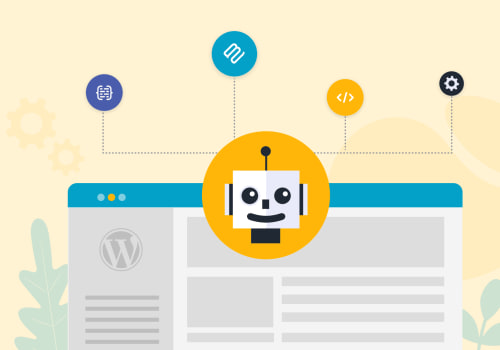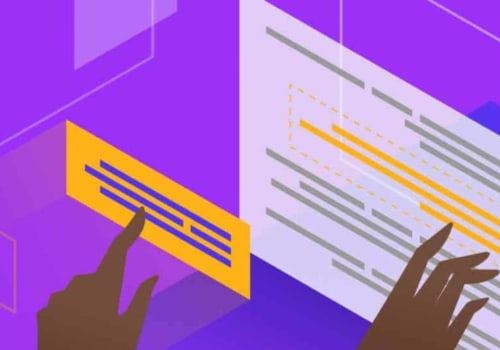Wix ADI is an AI-based website builder that simplifies website creation through its innovative AI assistant. Its innovative artificial intelligence technology simplifies the website design process, making it an ideal choice for users who may lack technical skills or time to dedicate to creating websites. Domain registration will be the first step on your website creation journey. And to find an appropriate domain name, we recommend that you turn to the DomainWheel domain name generator.
This is a free AI tool that uses artificial intelligence to generate domain name suggestions for your website. You just need to enter a keyword or phrase and DomainWheel will instantly provide you with domain name ideas. You can use DomainWheel as many times as you want for free. In the category of no-code AI tools for creating websites, we recommend trying something like Wix ADI.
The Wix Editor is better at customization, while Wix ADI uses AI to create websites much faster. All you need to do is specify the type of website you want and provide your company details. Then, Wix ADI will scan the web and social media for signals about your business, before combining all the information to generate a contextual website design. You could, for example, end up with a site design that matches the brand's colors in your logo.
But, if you prefer the opposite, Wix ADI allows you to change the style of the website, as well as add sections and edit the content. Using Wix ADI won't cost you anything, as it's one of the best free AI tools for creating websites. Second in our roundup of the best AI tools for creating websites is GitHub Copilot, an artificial intelligence engine that's ideal for developers and programmers. GitHub Copilot itself comes in the form of an extension, which you must embed in your code editor.
It is compatible with all the major ones, including Visual Studio Code, Visual Studio, JetBrains IDE, and Neovim. Once you've set it up, GitHub Copilot acts as your coprogrammer. Just notify the system and it will review the functions to generate the appropriate strings of code. However, GitHub Copilot's code suggestions aren't always perfect.
Its logic is based on source code extracted from publicly available repositories. Therefore, you may need to test it for errors. But, while its AI assistant is ideal for generating SEO-optimized content, 10Web is widely known for the AI Builder that goes with it. You can start by searching the Internet for websites with sophisticated designs.
After finding one, just copy its URL and paste it into the 10Web AI Builder. Any new page you create later will inherit your initial design. Otherwise, you can use the 10Web widgets to recreate an entire website. For example, if you work with screenshots, Uizard's artificial intelligence will detect and recreate all the elements of the design, including design, typography, style and colors.
You can then adjust them to your liking, add predesigned components, and generate custom themes. You should be able to share your website designs with team members, giving them the opportunity to preview the changes as they occur. Another useful AI-based functionality in Uizard is the generation of heat maps. You get smart tools that can create heat maps to predict how visitors will interact with your website's user interface.
Thanks to a permanently free plan, Uizard can be said to be one of the best free AI tools for creating websites. Speaking of the best free AI tools for websites, Zyro is another platform with multiple options. The platform itself is famous most of all for its website builder without coding. But, in addition to that, Zyro has a set of powerful AI tools that could help you with creating a brand.
Zyro's AI tools are completely free. So, even if you have a limited budget, they would still be the best AI tools for website branding. Otherwise, you can also count on Screpy for SEO auditing and ranking tracking. Although there are many AI website design tools on the market, it can be difficult to determine which ones are worth investing your time, energy, and budget.
We've rounded up 12 of the best AI website design tools you should consider to take advantage of this emerging technology. If you have a WordPress website and want to harness the power of AI, you're in luck. It offers a variety of tools, from the AI site builder to the AI assistant and more. Let's review the core capabilities of these two notable features.
With the voice generator, you can use text-to-speech technology to create a voice-over with more than 50 sound options and more than 15 languages. The tool also has a design creator where you can enter text, choose a template and instantly generate thousands of variations. Design, AI also offers a writing tool. VisualEyes is a game-changer for user interface designers.
With AI, it analyzes eye tracking to study your designs and lets you know what's good enough and what needs more work. Creating harmonized color palettes is one of the most boring, repetitive, and increasingly important tasks in the web design flow, and Colormind is an AI-powered tool that does it. Colormind has been around for a while, so the community has thoroughly evaluated and supported it. Collect the color preferences of the images, movies and works of popular art published daily.
It now includes a large database of color schemes created by other people. Khroma is an AI-based color tool that you can train by selecting 50 of your favorite colors. Based on these selections, the computer creates infinite combinations of color palettes. They can be displayed in topics, such as text, poster, gradient, and image, that address common usage situations.
Users can also test color schemes on their original photos. Web designers and anyone else who needs polished or altered photos now have it much easier thanks to AI, image processing, and automatic photo editing technologies. One of the best-known companies in this sector is Vance AI. Vance's AI employs deep convolutional neural networks trained on millions of photos and excels at handling genuine details.
Use the platform to streamline processes and provide new opportunities for imaginative image alterations and manipulations that meet brand requirements and customer expectations. We couldn't resist mentioning Dall-E while analyzing the deep learning models used to produce digital images from natural language descriptions. This powerful AI technology has some legal problems, since it is still being determined who is the owner of the images, but it has already transformed the way we can take certain types of photos. So what's the problem? Dall-E is an AI device that creates graphics in response to commands.
With higher resolutions, you can produce realistic images that mimic the aesthetics, ideas, and specific features and traits desired. Dall-E cannot produce violent, hateful, or pornographic images, which is wonderful news. In addition, it employs cutting-edge methods to stop the development of realistic facial images of real people. Web designers can safely use it to customize vector stock for their site design ideas.
You've heard of it once or twice if you're a designer. Although the platform is still in the testing phase (it is now available in open beta and is asking for feedback to improve it), the first findings are quite encouraging. A chatbot called Midjourney talks to people in their language. Using verbal descriptions and prompts, site designers can give instructions and commands to create graphics, including online interfaces.
It works well for creating ideas and unique material, perfect for so-called “personalized” ads developed for people. The lack of skilled web designers and web developers has been a serious problem for years, and it's not getting any better. Craft is a prototype tool that has been developed by InVision. This makes it perfect for web designers who want to move from concept to execution quickly, without any programming knowledge.
It can help you create interactive prototypes with the ability to animate transitions between screens in your project, all without the need for any code. This makes it perfect for designers who want to create beautiful interactions on their websites quickly without having to do the heavy lifting. This AI-based tool converts static prototypes into functional websites. AI technology generates many different versions of a home page or landing page based on data such as user preferences and tracking information.
Then, the AI engine chooses the best option for each user and shows it to them. Umso has a free plan available that is ideal for startups or small businesses with tight budgets: it offers unlimited websites and basic features such as e-commerce and lead generation capabilities (forms). I hope this post was helpful and, as always, please let me know if you have any questions or concerns. When choosing your AI website design tools, look for ones that are easy to use and that you can learn quickly.
In the final stages of creating your website, you'll need an AI tool that can audit the technical aspects. AI website design tools are popular because they reduce the amount of manual work needed for your site to succeed. With these best AI tools for creating websites, your productivity is sure to improve significantly along the journey. So, if you're looking for a way to streamline the process of bringing your website to life, look no further: AI website design tools.
One of the main reasons why AI website design tools are popular is that they reduce manual work and simplify the site design process. Nothing is better suited for that job than Screpy, which comes loaded with multiple AI tools for auditing and monitoring websites. Another reason AI website design tools are popular is because they reduce some of the repetitive manual work needed to get your images up to par with the web. For this reason alone, AI tools for website design and development have become increasingly popular in recent years, especially those that help automate the process.
.




